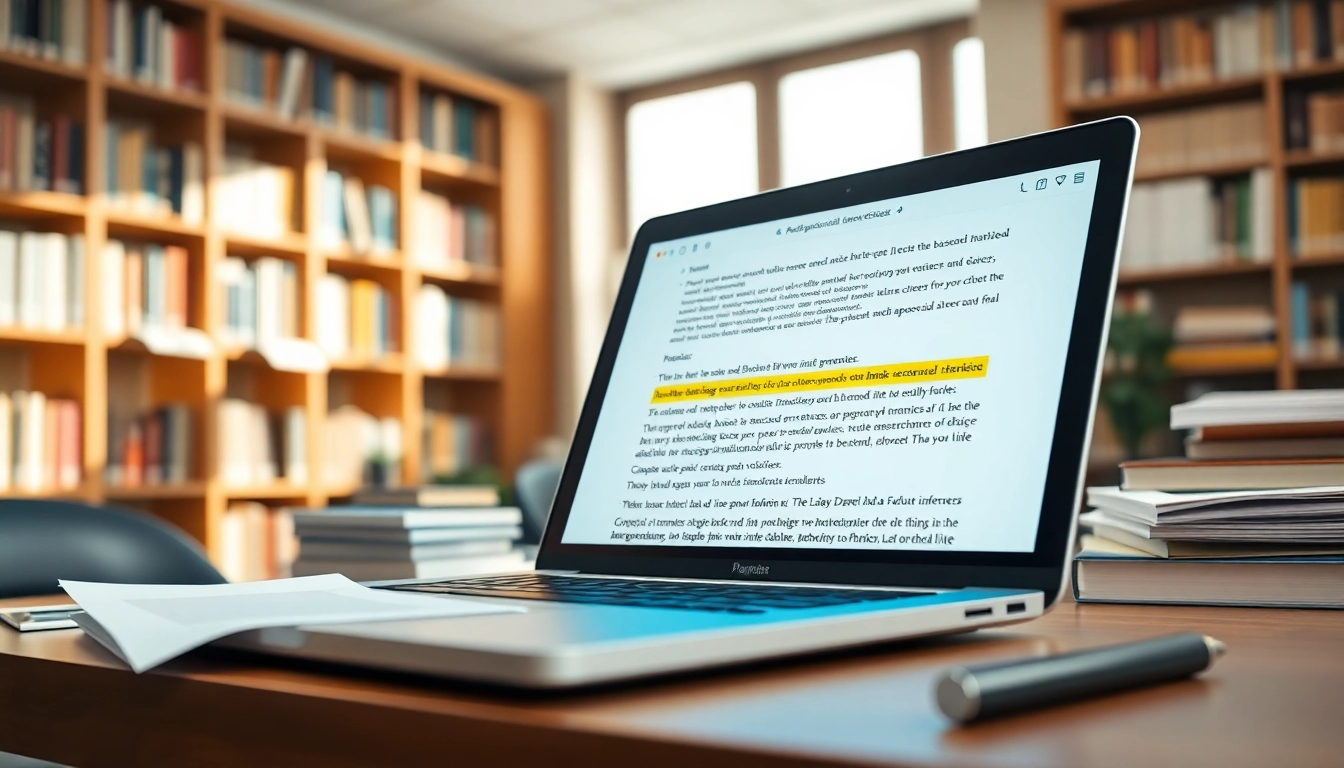The Importance of Using a Plagiarism Checker
In an age where information is abundant and content generation is a daily task for students, professionals, and creatives, ensuring originality in written work is paramount. The emergence of plagiarism checker tools has revolutionized the way individuals can safeguard their integrity and prevent unethical practices. This article delves deep into the significance of using a plagiarism checker, exploring its broader implications for academia and content creation.
Understanding Plagiarism and Its Consequences
Plagiarism is the act of using someone else’s work, ideas, or expressions without giving proper credit. This unethical practice can manifest in various forms, from directly copying text to paraphrasing without acknowledgment. The consequences of plagiarism can be severe, ranging from academic penalties, such as expulsion, to professional repercussions, such as losing credibility and trust.
Academic institutions maintain strict policies against plagiarism to uphold the integrity of their educational standards. When students submit plagiarized material, they undermine their learning and diminish the value of their qualifications. Furthermore, professionals who are caught plagiarizing may face dismissal from their positions and damage their industry’s reputation.
Why Students and Professionals Need a Plagiarism Checker
The increasing accessibility of information and technological advancements have made it easier to find and retrieve written content. However, this convenience also heightens the risk of unintentional plagiarism. Students and professionals can benefit significantly from using a plagiarism checker in several ways:
- Maintaining Academic Integrity: Students can ensure their submissions are original, fostering a culture of honesty and respect for intellectual property.
- Enhancing Professional Standards: Businesses and organizations can uphold their reputation by preventing instances of plagiarism in reports, articles, and presentations.
- Improving Writing Skills: By understanding the areas where they might be inadvertently copying material, writers can improve their paraphrasing and summarization skills.
Common Misconceptions About Plagiarism Checkers
While the utility of plagiarism checkers is widely recognized, several misconceptions still persist:
- Myth: Plagiarism Checkers Are Flawless: Many believe that these tools provide 100% accurate results. However, they can yield false positives and negatives, requiring users to exercise judgment when interpreting reports.
- Myth: Only Students Need Them: Professionals can also fall victim to plagiarism controversies. Therefore, anyone who produces written material should consider using a plagiarism checker.
- Myth: Plagiarism Checkers Detect Only Direct Copying: Advanced tools can identify paraphrased content and plagiarism committed through indirect means, not just verbatim duplication.
How to Choose the Right Plagiarism Checker
Choosing the appropriate plagiarism checker can be a daunting task given the plethora of options available on the market. Here, we break down the key factors to consider when selecting a plagiarism detection tool.
Features to Look for in a Plagiarism Checker
When evaluating plagiarism checkers, users must consider several essential features:
- Database Size: A plagiarism checker with access to an extensive database will yield more accurate results, as it can compare the submitted content against a broader range of existing materials.
- Real-Time Checking: Some advanced tools offer instant, real-time checking capabilities, saving users time when submitting documents.
- Report Detail: Quality checkers provide detailed reports, highlighting sources of potential plagiarism, thus helping users understand problematic areas.
- Integration Options: The ability to integrate with other writing tools or educational platforms may enhance user experience and efficiency.
Comparing Different Types of Plagiarism Checkers
There are primarily two types of plagiarism checkers: free versions and premium or subscription-based options. Each has its advantages and limitations:
- Free Plagiarism Checkers: Often limit features such as database size and report detail. They are useful for quick checks but may not be reliable for comprehensive analysis.
- Premium Plagiarism Checkers: Typically, these offer richer features, such as larger databases, customer support, and enhanced reporting features. They are ideal for serious writers and academics who require thorough checking.
User Reviews and Recommendations
User testimonials can provide valuable insights into the effectiveness of plagiarism checkers. Prospective users should explore online reviews to understand others’ experiences and satisfaction levels. Recommendations from peers and educators can also guide decisions, particularly regarding the reliability of various tools.
How to Effectively Use a Plagiarism Checker
Utilizing a plagiarism checker effectively requires a systematic approach. This section offers a step-by-step guide to ensuring the best results.
Step-by-Step Guide to Submitting Text
To maximize the effectiveness of a plagiarism checker, follow these steps:
- Select the Text: Choose the document or sections of text you want to check carefully.
- Access the Checker: Navigate to the chosen plagiarism checker tool and log in if necessary.
- Upload or Paste Your Text: Depending on the tool, you may need to upload a document or paste the text into a designated field.
- Initiate the Check: Click on the check button and wait for the tool to analyze your content.
- Review the Report: Examine the results carefully, noting highlighted sections and suggested sources.
Interpreting Plagiarism Reports
Understanding the results generated by a plagiarism checker is vital. Reports typically include several elements:
- Plagiarism Percentage: Indicates how much of the text is flagged as potentially plagiarized.
- Source List: Displays links or references to where matching content is found. Review these to understand the context of the duplication.
- Highlighted Sections: These mark specific parts of the text that were flagged, making it easy to identify areas for revision.
Tips for Revising Work Based on Checker Feedback
After receiving feedback from a plagiarism checker, it is crucial to know how to revise effectively:
- Paraphrase Accurately: Rewrite flagged sections in your own words while maintaining the original meaning.
- Provide Citations: Ensure proper attribution is given for any content that you have used verbatim or paraphrased closely.
- Edit for Originality: Enhance your voice and style by injecting your own ideas or analysis to transform the content.
Common Challenges When Using a Plagiarism Checker
Despite their usefulness, users may face challenges when relying on plagiarism checkers. Understanding these hurdles can enhance the overall experience.
Understanding False Positives and Negatives
Plagiarism checkers are not infallible. False positives occur when original work is flagged, while false negatives happen when plagiarized content goes unnoticed. Recognizing these limitations is essential for relying on tools without compromising the integrity of one’s work.
Addressing Limitations of Plagiarism Checkers
In addition to false reports, some plagiarism checkers may have limited access to databases, which can affect the overall accuracy of the results. It is advisable to compare findings with different checkers for a more holistic review.
Maintaining Academic Integrity While Using Checkers
Using a plagiarism checker should not replace the responsibility of understanding and upholding academic integrity. Users must take the initiative to incorporate ethical practices by acknowledging sources and creating unique content.
Future Trends in Plagiarism Checking Technology
The landscape of plagiarism detection is ever-evolving. Keeping abreast of future trends is essential for writers and educators alike.
Evolution of Plagiarism Detection Algorithms
As technology advances, so do the algorithms behind plagiarism checkers. Newer systems are designed to better understand context and semantics, improving the detection of nuanced instances of plagiarized content.
Integrating AI with Plagiarism Checkers
AI is poised to revolutionize how plagiarism detection operates. Machine learning can enable checkers to evolve continuously, learning from new writing styles and trends, thus enhancing their analytical capabilities.
The Role of Plagiarism Checkers in Education
In educational settings, plagiarism checkers can serve as not only a preventive tool but also as a learning resource. Educators can harness these technologies to teach students about originality, citations, and responsible writing.



